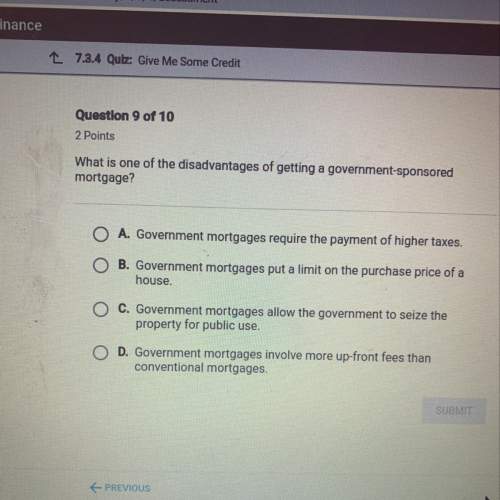
Coca‑Cola and Pepsi are both releasing a new soda at the same time. Each company is fairly well known, and they are both deciding between pursuing two advertising strategies. Each firm knows that its profits will be affected by its own decision and the decision of the competing firm. The payoff matrix contains the estimated profits for both companies for all possible strategies. Pepsi's profits are in the lower (green) triangle of each cell and Coca‑Cola's profits are in the upper (blue) triangle of each cell. Profits (payoffs) are in millions of dollars. Coca‑Cola Strategy 1 Strategy 2 Pepsi Strategy 1 A $75 $75 B $25 $300 Strategy 2 C $300 $25 D $150 $150 What is Coca‑Cola's dominant strategy? strategy 2 Coca‑Cola does not have a dominan

Answers: 1


Another question on Business

Business, 21.06.2019 17:30
The digby's workforce complement will grow by 20% (rounded to the nearest person) next year. ignoring downsizing from automating, what would their total recruiting cost be? assume digby spends the same amount extra above the $1,000 recruiting base as they did last year. select: 1 $2,840,000 $3,408,000 $570,000 $475,000
Answers: 1

Business, 22.06.2019 04:30
Georgia's gross pay was 35,600 this year she is to pay a federal income tax of 16% how much should georgia pay in federal income ax this year
Answers: 1

Business, 22.06.2019 20:00
Assume the perpetual inventory method is used. 1) the company purchased $12,500 of merchandise on account under terms 2/10, n/30. 2) the company returned $1,200 of merchandise to the supplier before payment was made. 3) the liability was paid within the discount period. 4) all of the merchandise purchased was sold for $18,800 cash. what effect will the return of merchandise to the supplier have on the accounting equation?
Answers: 2

Business, 22.06.2019 20:20
Amanager of a store that sells and installs spas wants to prepare a forecast for january and june of next year. her forecasts are a combination of trend and seasonality. she uses the following equation to estimate the trend component of monthly demand: ft = 30+5t, where t = 1 in january of this year. seasonal relatives are 0.60 for january and 1.50 for june. what demands should she predict for january and june of next year
Answers: 2
You know the right answer?
Coca‑Cola and Pepsi are both releasing a new soda at the same time. Each company is fairly well know...
Questions



Mathematics, 13.07.2019 08:30

History, 13.07.2019 08:30

Mathematics, 13.07.2019 08:30


English, 13.07.2019 08:30

Mathematics, 13.07.2019 08:30

History, 13.07.2019 08:30

Mathematics, 13.07.2019 08:30

Mathematics, 13.07.2019 08:30


Mathematics, 13.07.2019 08:30



Chemistry, 13.07.2019 08:30


Chemistry, 13.07.2019 08:30

Health, 13.07.2019 08:30

Mathematics, 13.07.2019 08:30




